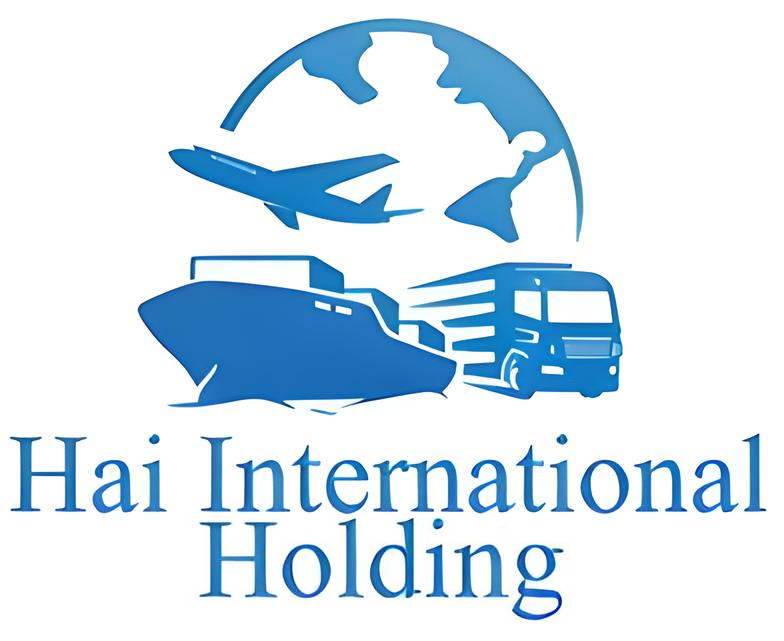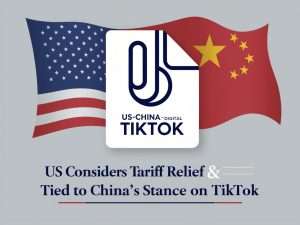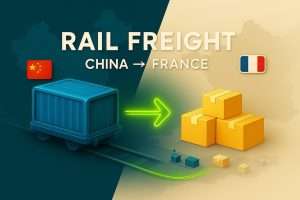Introduction
Background:
From ancient dynasties to contemporary metropolises, China’s rich history in jewelry craftsmanship has left an indelible mark on the global stage. Glancing back, the intricate jade carvings of the Ming dynasty or the dazzling gold artifacts from the Tang era not only highlight the nation’s deep-rooted talent but also its innate passion for aesthetics.
Today, China doesn’t just represent a historical treasury but stands as the global epicenter of the jewelry trade. It’s not merely about the sheer volume of production; it’s about the meticulous craftsmanship, innovation, and tradition blending seamlessly. Imagine a world where the legacies of ancient goldsmiths meet the brilliance of modern design – that’s the contemporary Chinese jewelry market for you.
Role of HAI International Holding:
When it comes to ensuring that these precious adornments reach global shores safely and on time, HAI International Holding emerges as the guardian angel for importers. Think of them as the unsung heroes who masterfully navigate the complex corridors of international freight, ensuring every necklace, ring, or bracelet reaches its destination as pristine as it left its workshop.
Having carved a niche in facilitating jewelry imports from China, HAI International Holding isn’t just another freight forwarder. They symbolize trust, efficiency, and a commitment to excellence. With their expertise, even the most daunting challenges like customs clearance or shipping logistics feel like a cakewalk. It’s no wonder then that countless businesses, from startups to seasoned giants, rely on HAI International Holding to power their jewelry import dreams.
The Allure of Chinese Jewelry
Quality & Craftsmanship:
When we talk about the essence of Chinese jewelry, two words come to mind: quality and craftsmanship. Over the centuries, Chinese artisans have mastered the art of creating jewelry that not only captivates the eye but also stands the test of time.
Delve a bit deeper, and you’d discover the intricate designs inspired by everything – from China’s vast landscapes to its ancient myths. Remember the Dragon and Phoenix motifs that have been popular for centuries? These aren’t just designs; they narrate stories, beliefs, and the heart of a culture.
But it’s not just about the aesthetics. The durability and superiority of the materials used – be it jade, gold, silver, or pearl – ensure that these pieces aren’t just transient fashion statements but lasting heirlooms.
Price Advantages:
Let’s face it: in today’s global market, price plays a pivotal role. And this is where China truly shines, offering unparalleled cost advantages. How, you ask?
First, there’s the undeniable benefit of economies of scale. China produces a staggering amount of jewelry; in 2019 alone, China exported jewelry worth over $15 billion. This massive production volume drives costs down, offering competitive prices that are hard to match.
Next, consider the access to raw materials. With vast reserves of gems and metals, China doesn’t rely heavily on imports. This means reduced costs, and yes, better prices for you.
Variety & Uniqueness:
Chinese jewelry is like a palette with infinite colors. Whether you’re into the classic elegance of traditional designs or the boldness of contemporary styles, China offers it all. From the graceful Hanfu accessories that harken back to ancient times to modern, avant-garde pieces seen on global runways, the spectrum is vast and varied.
But the magic doesn’t stop there. The customization opportunities in China are unparalleled. Dreaming of a bespoke piece that mirrors your vision? Chinese manufacturers are adept at turning those dreams into tangible, sparkling reality.
Starting Your Journey: Preliminaries
Identifying Reliable Suppliers:
One of the initial, yet most crucial steps in the import journey is pinpointing the right supplier. And in a vast market like China’s, this can feel like searching for a needle in a haystack. So where should you begin?
For starters, online platforms like Alibaba and Made-in-China have transformed the way businesses connect with manufacturers. They offer a plethora of choices, detailed supplier profiles, and most importantly, a platform to initiate conversations. But, while they’re convenient, can they replace the insights you gain from local agents? Agents who’ve been in the field, understand the local dynamics, and can guide you towards the best deals?
A smart strategy? Use both. Start online, create a shortlist, and then leverage local expertise to make the final decision.
But don’t forget, in this digital age, reviews and testimonials are gold. They offer unfiltered insights into a supplier’s reliability, quality, and professionalism. Always make them a part of your vetting process.
Trade Shows & Expos:
Trade shows are where the magic happens. They are the epicenters of the jewelry world, offering a glimpse into the latest trends, innovations, and the industry’s direction. If you’re serious about importing Chinese jewelry, mark your calendar for events like the Shenzhen International Jewelry Fair or the China International Gold, Jewellery & Gem Fair. These aren’t just exhibitions; they’re experiences.
But it’s not just about marveling at the displays. Trade shows are networking goldmines. They provide an opportunity to meet suppliers face-to-face, understand their capabilities, and even strike deals on the spot. Building a rapport with suppliers can pave the way for smoother transactions, better prices, and premium quality. So, when attending these events, keep your business cards ready and your networking game stro
Insider’s Guide to China’s Jewelry Hubs
Key Regions & Their Specialties:
In China, the phrase ‘jewelry hub’ isn’t a mere designation but a testament to centuries of expertise, innovation, and sheer passion. Let’s embark on a journey to explore the crown jewels of China’s jewelry sector.
Guangzhou – Often dubbed as the ‘City of Gold’, Guangzhou is nothing short of a global jewelry mecca. From high-end diamonds to exquisite jade pieces, the city is renowned for its top-tier craftsmanship and avant-garde designs. Notably, the Zhuji Pearl Market in Guangzhou stands as a shimmering testament to the city’s status in the pearl jewelry landscape.
Yiwu – Enter Yiwu, and you’re stepping into a veritable treasure trove. What sets Yiwu apart is its staggering variety. It’s a paradise for those looking for affordable yet quality jewelry. Whether you’re sourcing for bulk orders or bespoke pieces, Yiwu’s International Trade City has something for every jewelry enthusiast.
Market Trends & Consumer Preferences:
As we edge closer to 2023, the jewelry market is all set to dazzle with a blend of the new and the timeless.
Speaking of the new, upcoming jewelry styles in 2023 are expected to resonate with sustainability and minimalism. Think recycled metals, lab-grown diamonds, and designs that reflect the modern consumer’s consciousness. And don’t be surprised if you see a surge in gender-fluid jewelry designs, echoing the global shift towards inclusivity.
But while trends come and go, some things remain eternal. There are those age-old traditional pieces that defy the constraints of time. Pieces like the dragon and phoenix bangles, jade pendants, or the intricate silver anklets from the Miao ethnic group. These aren’t mere jewelry; they’re pieces of history, heritage, and unparalleled artistry that never fade away in the fickle world of fashion.
Navigating Supplier Relationships
Clear Communication:
In the realm of international business, nothing is more valuable than clear, concise communication. When sourcing jewelry from China, this becomes even more paramount.
One of the first obstacles many encounter is the language barrier. While many suppliers might have English-speaking representatives, nuances can get lost in translation. How to overcome this? Consider hiring a local translator or using advanced translation tools. Remember, it’s not just about literal translation but ensuring the essence of your requirements is captured.
Another crucial aspect is documenting every agreement. Whether it’s design specifications, delivery timelines, or payment terms, have them in written format. This isn’t about mistrust; it’s about clarity. It ensures both parties are on the same page and can refer back if any discrepancies arise.
Quality Checks & Assurance:
When it comes to jewelry, especially if it’s meant for resale, there’s no room for errors in quality. So, how can you ensure what you see is what you get?
First and foremost, always ask for physical samples. A picture might speak a thousand words, but a tangible sample reveals the story in its entirety – from material quality to craftsmanship.
Another effective strategy is to employ third-party quality verification agencies. These entities specialize in inspecting products against your specified standards. Organizations like SGS or Bureau Veritas are renowned for their meticulous inspection services in China.
Negotiations & Pricing:
Money talks. And when it comes to business, it’s all about striking that perfect balance between cost and quality.
Several factors influence prices in the jewelry sector. This includes material costs, design intricacy, labor charges, and even the volume of your order. Having a clear understanding of these can arm you with the insights needed during negotiations.
But how do you ensure you’re getting the best deals without compromising quality? Here are some Brian Dean-inspired tips:
- Research: Before entering negotiations, know the market rates. Being informed gives you an edge.
- Build relationships: Suppliers are more likely to offer better deals to businesses they see potential long-term relationships with.
- Volume discounts: Consider placing bulk orders or establishing a long-term supply agreement. This often leads to better per-piece pricing.
- Open dialogue: Be clear about your budget constraints and quality expectations. Sometimes, a simple conversation can lead to win-win solutions for both parties.
Customs, Duties, & Documentation
Navigating the world of customs and documentation can be akin to navigating a maze. But with the right knowledge and a strategic approach, you can turn this complex process into a smooth sail.
Necessary Paperwork:
Importing jewelry isn’t just about selecting designs and negotiating prices. There’s a whole world of documentation that ensures your precious cargo reaches you without hitches.
At the forefront, you’ll need a Bill of Lading (B/L) – a critical document that acts as a contract between the shipper and the carrier. Additionally, the Packing List and Commercial Invoice are non-negotiables. These provide detailed insights into the product quantities, descriptions, and the transaction’s financial aspects.
Now, for jewelry, a Certificate of Authenticity can often be paramount, especially for high-value or unique pieces. This vouches for the jewelry’s genuineness.
However, the journey doesn’t end there. Remember to always cross-check with your country’s import guidelines, as specific specialized documents may be required based on the type and value of jewelry.
While diving into this paperwork, be wary of common mistakes. These range from minor clerical errors, like misspelled names, to significant oversights, like incorrect product classification. Such errors can lead to delays, penalties, or even shipment confiscation.
Understanding Taxes & Duties:
One of the primary costs, often overlooked by newcomers in the import business, are the taxes and duties levied upon goods.
Firstly, understand the Harmonized System (HS) Code associated with your jewelry type. This code determines the duty rate. Often, different types of jewelry (gold, silver, pearls) have distinct HS codes.
Next comes the actual breakdown of fees. Apart from the basic customs duty, there might be additional taxes, surcharges, or even Value Added Tax (VAT) based on your country’s regulations.
But here’s the silver lining. By making informed decisions, you can often save on these taxes. For instance, some countries have free trade agreements with China, leading to reduced or even waived duties. Additionally, structuring your business in a certain way or utilizing specific import schemes might offer tax breaks.
In essence, while the world of customs and duties might seem daunting, with thorough research and perhaps the guidance of a customs broker or consultant, you can optimize this process, ensuring your jewelry reaches you without burning a hole in your pocket.
HAI International Holding: Your Trusted Partner In China
Why Choose a Freight Forwarder?
Importing jewelry from China can be like a puzzle with a thousand pieces, each demanding attention. The complexities of importing jewelry can boggle even the savviest of entrepreneurs. From managing shipping routes and schedules to dealing with customs and documentation, the maze can seem never-ending.
This is where a freight forwarder like HAI International Holding becomes your beacon of hope. They’re the experts who untangle this web for you. They’ve mastered the logistics, they know the regulations, and they understand the intricacies of handling delicate cargo like jewelry.
But it’s not just about simplifying the process; it’s about ensuring safe and insured delivery. When you’re dealing with jewelry – often high in value and sentiment – you can’t afford to take risks. Freight forwarders like HAI International Holding offer insurance options that protect your investment and your peace of mind.
Services & Offerings:
What sets HAI International Holding apart from the rest? It’s their commitment to offering custom solutions tailored specifically for jewelry imports. They understand that the needs of a jewelry importer are unique, and a one-size-fits-all approach won’t cut it.
They offer tailor-made solutions that encompass everything from choosing the right shipping method (air, sea, or rail) to handling customs clearance with finesse. Their expertise extends to packaging and handling, ensuring your delicate jewelry arrives unscathed.
But it’s not just about what they do; it’s how they do it. With real-time tracking and customer support that’s more than just a helpline, HAI International Holding ensures you’re in the loop every step of the way. This transparency and communication are the pillars of trust in the world of importing, and HAI International Holding excels in both.
Maximizing Profits: Marketing Your Imported Jewelry
Digital Marketing Strategies:
Once you’ve successfully imported your jewelry, the next frontier is selling it. In today’s digital age, online visibility is key. This is where SEO best practices come into play. Optimizing your website and product listings for search engines ensures that your jewelry is discoverable by potential customers. It’s not just about being online; it’s about being visible where it matters.
Additionally, leveraging social media platforms can be a game-changer. Instagram, Pinterest, and Facebook are visual platforms – perfect for showcasing your jewelry’s aesthetics. A well-crafted social media strategy can turn casual browsers into loyal customers.
Offline Marketing Ideas:
While the digital world is crucial, don’t underestimate the power of offline marketing. Hosting jewelry exhibitions, whether physical or virtual, allows customers to see, touch, and feel your products. It’s an experience that online platforms can’t replicate.
Collaborative events and sponsorships can also amplify your brand’s presence. Partnering with local fashion shows or jewelry expos can put your products in front of a larger audience.
In essence, your jewelry import journey isn’t complete until your products reach the hands of delighted customers. HAI International Holding takes care of the logistics, but your marketing efforts ensure your jewelry shines in the market.
Challenges & Risks in the Jewelry Import Business In China
The world of jewelry import isn’t without its fair share of challenges and risks, especially when dealing with the vast landscape of China.
Counterfeit Goods:
The allure of importing jewelry from China comes with a lurking shadow – the presence of counterfeit goods. In a market as extensive as China’s, it’s not uncommon to stumble upon products that appear genuine but are far from it.
Identifying and avoiding fake products is an art in itself. One way is to scrutinize the craftsmanship; counterfeit jewelry often lacks the finesse and attention to detail of authentic pieces. Another is to request product certificates and authenticity documents.
The cost of falling victim to counterfeit extends beyond the monetary. It can tarnish your brand value, erode customer trust, and lead to legal hassles. Hence, vigilance is key when navigating this treacherous territory.
Shipping Delays & Losses:
The journey of your imported jewelry from China to your doorstep is fraught with potential pitfalls. Shipment delays are a common occurrence and can stem from various factors, including customs clearance bottlenecks, adverse weather conditions, or logistical mishaps. It’s crucial to be prepared for these delays and have contingency plans in place.
But what about the worst-case scenario – shipment losses? Your precious cargo could go missing during transit. This is where insurance plays a pivotal role. Knowing why and how to insure shipments can save you from catastrophic financial losses. Shipping insurance acts as a safety net, ensuring that you’re compensated in case of loss or damage.
Concluding Thoughts
As we conclude this journey through the intricacies of importing jewelry from China, it’s imperative to reflect on the road ahead.
The future of the jewelry import business holds immense promise. China’s jewelry industry continues to evolve, offering new designs, materials, and innovations. For importers, this translates into an ever-expanding treasure trove of opportunities.
However, success in this dynamic landscape hinges on one’s ability to stay updated and adapt to change. The jewelry market, like fashion, is driven by trends and consumer preferences. To thrive, you must keep a finger on the pulse, be agile in your strategies, and embrace innovation.
In the ever-evolving world of jewelry imports, those who navigate the challenges, mitigate risks, and seize emerging opportunities are the ones who will shine the brightest.
Frequently Asked Questions
Why is Chinese jewelry globally popular?
Chinese jewelry enjoys global popularity for several reasons. Firstly, it is renowned for its exquisite craftsmanship and attention to detail, resulting in high-quality pieces. Secondly, China's vast production capabilities allow for a wide variety of designs to cater to diverse tastes. Finally, competitive pricing due to economies of scale makes Chinese jewelry an attractive choice for consumers worldwide.
What are the top 3 things to consider when choosing a supplier?
Reliability and Reputation: Look for suppliers with a solid track record and positive reviews/testimonials. Reputation matters in the jewelry industry. Quality and Craftsmanship: Insist on physical samples to assess the quality and craftsmanship of the jewelry. This is crucial for ensuring you receive what you expect. Communication and Transparency: Choose suppliers who can effectively communicate in your language or provide translation services. Transparency in terms of pricing, timelines, and agreements is key to a successful partnership.
How to handle disputes with suppliers effectively?
Handling disputes with suppliers requires a methodical approach. Start by reviewing the contract and clearly identifying the source of the dispute. Communicate your concerns professionally and seek an amicable resolution. If negotiations fail, consider involving a neutral third party or legal counsel to mediate the dispute. Always document the dispute resolution process.
What's the role of a freight forwarder like HAI International Holding in the import process?
A freight forwarder like HAI International Holding plays a pivotal role in simplifying the complex import process. They handle logistics, including transportation, customs clearance, and documentation. They ensure safe and timely delivery, optimize shipping routes, and offer insurance options. In essence, they act as the bridge between the supplier in China and your destination, ensuring a smooth flow of goods.
How to ensure the authenticity of the imported jewelry?
Ensuring the authenticity of imported jewelry is paramount. Start by requesting Certificates of Authenticity from suppliers, which validate the product's genuineness. Perform physical inspections upon receipt of goods to check for quality and craftsmanship. Additionally, consider third-party appraisals or inspections from reputable organizations. Building relationships with trustworthy suppliers also goes a long way in guaranteeing authenticity.











